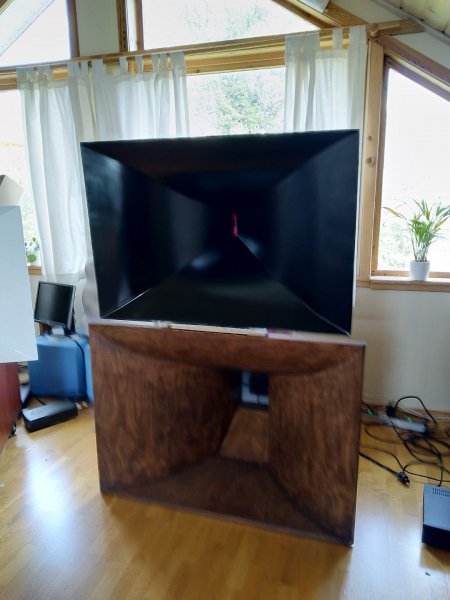Ocean Way Audio has announced a new horn-based loudspeaker, the HRA. This looks like a very large, heavy and ambitious offering, using a 1" compression driver...
Beautiful speaker! I was very favorably impressed with the smaller Ocean Way speakers I heard at T.H.E. show last summer. ("Last summer"?? Sure seems like longer ago than that... a lot has happened in the world since "last summer".)
I don't have any insights into the compression driver, but presume that it's a really good one. There is way too much effort put into that speaker by a very competent designer for him to skimp on the compression driver.
Interesting horns! In my opinion the design of the horn matters more than the specifics of the compression driver. Not that I don't find pure Beryllium as sexy as the next guy, but based on blind listening tests I'm familiar with, the horn is the more decisive component.
That looks to me like a Radial horn, but without the vanes we often see. The vanes help with horizontal dispersion AND fine-tune the total cross-sectional area of the horn in order to achieve the target curve shape (exponential, hyperbolic, whatever.) Generally Radial horns have very uniform dispersion in the horizontal plane (where it matters the most) but not so much in the vertical plane (where it matters less). Typical for radial horns is a vertical pattern which generally narrows with increasing frequency. For studio monitors where speaker positioning can be optimized for an ear height which is known in advance to within a couple of inches, vertical off-axis anomalies are arguably relatively unimportant. Anyway I'm guessing that's a somewhat evolved version of the Radial concept, as it looks a little bit different to me from other radials I've looked at closely. The literature says "constant directivity" and if true in the vertical as well as the horizontal planes, imo that's new territory for that type of horn.
In my experience the MHM (horn in the middle) format is generally more precise but less forgiving than HMM (horn on top). The lobing error is more severe if your ears are at the wrong height for MHM. With HMM the design is optimized for being a little bit off anyway, and beyond that is geometrically more forgiving of ears being at the wrong height.
When tasked with building custom studio monitors, I have chosen MHM over HMM, and aimed the horns right smack at the recording engineer's ears. For home audio I have used both formats, depending on the specifics.
In my opinion crossover frequency and slope come into play. The higher the crossover frequency and/or shallower the slope, the more I'd be inclined to use MHM for home audio. But as the crossover frequency gets into the 1 kHz region or lower, the ear loses resolution in the vertical plane and HMM becomes competitive. And sometimes what looks like HMM is actually a 2.5 way, with only the upper midwoofer active all the way up to meet the horn.
My guess is that designer Allen Sides saw opportunities for improvement to what is a classic big studio monitor format, perhaps optimized for home audio. I hope he finds more commercial success than Usher apparently did!














